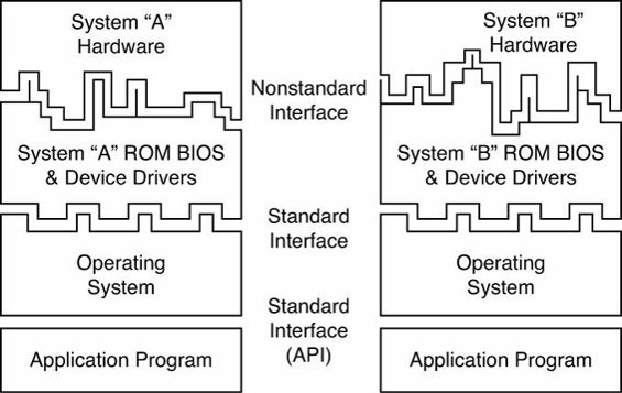Hardware Reference
In-Depth Information
replacing those in the motherboard. When modern 32-bit and 64-bit versions of Windows are run,
corresponding 32-bit and 64-bit drivers are loaded from disk to replace
all
the drivers in the
motherboard ROM. Modern OSs cannot use any of the 16-bit drivers found in either the motherboard
ROMs or any adapter card ROMs and must use only 32-bit or 64-bit drivers, depending on the
version. The 16-bit code in the motherboard ROM is used only to get the system functioning long
enough to get the drivers and OS loaded, at which point they take over. In other words, once
Windows is loaded, the BIOS (meaning all the drivers) essentially resides entirely in RAM. The
motherboard ROM exists only to get the system started, to initialize specific hardware, to offer
security in the way of power-on passwords and such, and to perform some basic initial configuration.
After the OS is loaded, a whole new set of drivers takes over.
A PC system can be described as a series of layers—some hardware and some software—that
interface with each other. In the most basic sense, you can break a PC down into four primary layers,
each of which can be broken down further into subsets.
Figure 5.1
shows the four layers in a typical
PC.
Figure 5.1. PC system layers.
The purpose of the layered design is to enable a given OS and applications to run on different
hardware.
Figure 5.1
shows how two machines with dissimilar hardware can use different sets of
drivers (BIOS) to interface the unique hardware to a common OS and applications. Thus, two
machines with different processors, storage media, video display units, and so on can run the same
OS and applications.
In this layered architecture, the application software programs talk to the OS via what is called an
application programming interface (API)
. The API varies according to the OS you are using and
consists of the various commands and functions the OS can perform for an application. For example,
an application can call on the OS to load or save a file. This prevents the application itself from
having to know how to read the disk, send data to a printer, or perform any other of the many
functions the OS can provide. Because the application is completely insulated from the hardware, you
can essentially run the same applications on different machines; the application is designed to talk to



